Time flies when you’re diligently attending rehab. It’s been more than eleven months since I had my aortic root replaced. I last blogged about my experience six months ago (what!), but time has been moving at a strange rate what with my improving levels of stamina and the increase of daily responsibilities that come with recovery. You feel like you’re on a plateau, when really you’re still marching up that hill.
I know you’re only here for sexy Instagram before and after shots, so…
When I left you, I was talking about my time on the Critical Care ward (ICU). No one in the history of human endeavour has ever said “Critical Care – fun for all the family!”, and I know if you’re reading this in anticipation of your own surgery, you’re likely not going to be expecting a spa experience. I’ll be honest – it was not fun. But. The worst thing by far was the inability to understand that what I was experiencing was temporary.
To recap – I’d just had my chest sawn in half and cracked open like a walnut. I had two significant leg wounds I wasn’t expecting. Entering my body just above my waist were two lung drains roughly the same thickness as tubes of Smarties. These were all surprising and new sensations I had no frame of reference for, and the first thing your brain does when faced with startling new stimulus is to think, This is my life now.
Everyone kept telling me, no, this is your life now.
For pain relief I was given oral morphine, codeine, and, hilariously, plain old paracetamol. None of this helped. I did not sleep. I couldn’t accept so much as a mouthful of food. I watched the nurses come and go in day and night shifts, on, off, on, off. Time lost all meaning. By day three I was… unhappy. I remember a group of doctors at the foot of my bed puzzling over my body’s refusal to accept pain relief.
“Do we use ketamine in this hospital?” one of them muttered.
God, I wish the answer had been yes.
Instead, I was given an epidural. When I try to describe this experience, my brain throws up a wall of static because this was… unenjoyable. It also turned out to be completely useless. In the end, I was given a personal morphine pump, which is a bit like an opiate vending machine where you just mash the button in the hope of blissful oblivion. None of this is normal, by the way, but in general the young do experience more pain than the old. I was just the lucky millionth customer.
I think it was day three when my drains came out. In the end, this was the only thing that gave me relief. With the help of my morphine pump and a canister of gas and air, I was perfectly happy for the nurses to just yank those suckers out. That’s literally how they do it. Two seconds of internal carpet burn and a couple of neat little stitches. Honestly, it was wonderful. The pain was by no means over, but I now had one less problem to live with.
Eventually a bed was found for me on a regular ward. I was profoundly full of morphine by this point, so I remember the trip down the hall as something akin to The Dam Busters complete with explosions and search lights. I just remember thinking This bed is moving too fast and they’re going to clip a door and I’m going to just die. It was the middle of the night, eerily quiet. When we arrived at the ward, I was given my own private room, which I would later understand as a blessing. At that moment, in my drug-addled brain, I’d been wheeled into an empty grey cell where I would be left to die. Everything equated death in my mind that night. That was the drugs talking.
A word on opiates – I started hallucinating wildly as soon as I left Critical Care. Some people experience this, others don’t. It was never frightening, but it was impossible to tell reality from dreams for at least two days, and even weeks afterwards I had to ask people I knew if they really had come into my room at night to stare wordlessly at me like Christopher Lee’s Dracula. It’s hard to tell yourself everything’s going to be okay when Madame Tussaud shuffles around your bed, hanging up death masks of Louis XVI.
From here, I’m happy to say, I improved daily. Bodies – even my delicate Marfanoid one – work fast to heal. I still couldn’t eat much, so the catering staff – who are perfect angels working under very strained circumstances – made me ice cream milkshakes to try to get calories into me. It took me entire afternoons to get half of one of these down me. Everything becomes an epic battle, but with an army of kind, hilarious nurses and healthcare assistants behind you every step of the way, the impossible becomes doable.
As I regained my grip on reality, I had to come to terms with how radically reality had changed. My usually dry skin had become incredibly oily. My hair – everywhere – had turned ginger and was growing at an amazing rate. My fingernails, too, were like stalactites. The nurses started calling me “That poor girl” because my period arrived out of nowhere. Swollen, sweating and covered in bruises, I resolutely ignored my chest wound. I’d been trussed up in a binder, so I was yet to see it, and even the thought turned my stomach. I’d spent a year on the waiting list worrying about how it would look, how much I would hate it, what a big deal strangers would make out of it.
Naturally, I glimpsed it by accident.
A nurse had removed my binder to wash me, and my eyes flickered open long enough to register a puffy yellow mass of bruises and iodine. I think I must have groaned because the nurse said, “It’s low down and very neat. I see a lot of these. This is a good one.”
Well, I thought. There’s nothing I can do about it ether way.
Every day, my task was to get out of bed at least once and sit in the chair. My room had a bathroom, but I couldn’t walk to it, as hard as I tried. I wanted to move. I also desperately wanted to stay in bed. It took two nurses to get me up and ease me back down every time. Sometimes, it was just impossible. That was the worst. Having to be told to give up. I can still hear my Nigerian night nurse telling me, “If you say sorry one more time, imma smack your bottom”.
But the trend was an upward one. Every day, I lost another tube. No more neck cannula, no more temporary pacemaker. One day I realised I could speak in short sentences without much trouble. Another day, my nurses walked me to the bathroom to brush my own teeth. Soon, it was time to have my first solo shower, perched on a stool. I felt like a gladiator. My appetite came roaring back, and though I couldn’t realistically eat much at all, it was all I could think about. If you’d offered me a Dorito, I’d have bitten your arm off. That’s your body healing – urges become commands. Eat. Sleep. Eat more. Sleep again. OBEY.
I was in hospital for a total of ten days. Usually, someone undergoing an aortic root replacement will be sent home on day four, but I was spiking mysterious fevers every evening and needed antibiotic fusions. It turned out I had antibiotic resistant bacteria on my lungs. This sounds horrifying, but it wasn’t the same thing as having an infection, so I used the extra time to work with my physiotherapist, learning to stand without using my arms, hobbling increasing distances every day, and then – like an actual Jedi – one single stair. Each tiny new achievement felt like vaulting over a mountain. Here’s me at day seven, astonished to be standing up unsupervised:
That’s the face of someone grudgingly impressed by the tenacity of their meat cage.
Next time, I’m going to write about being discharged and adjusting to life on the outside.

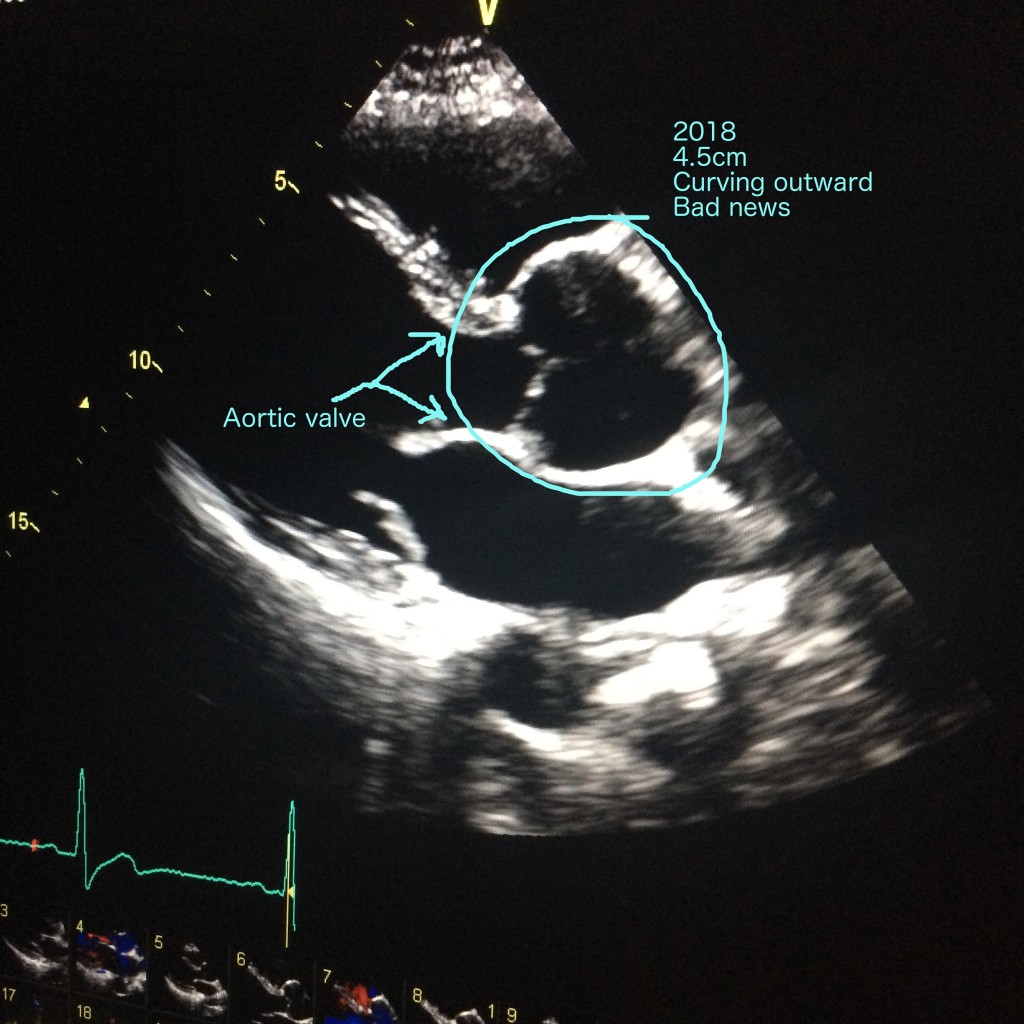
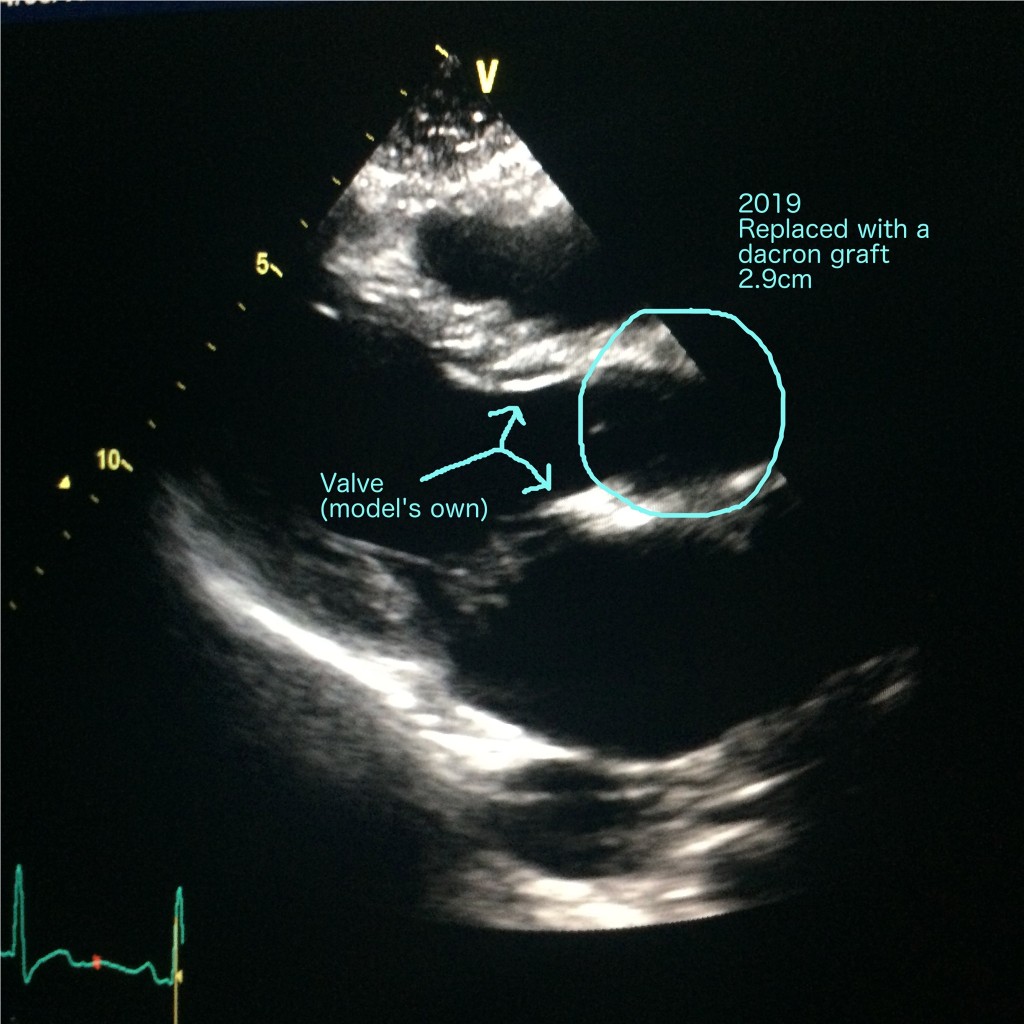
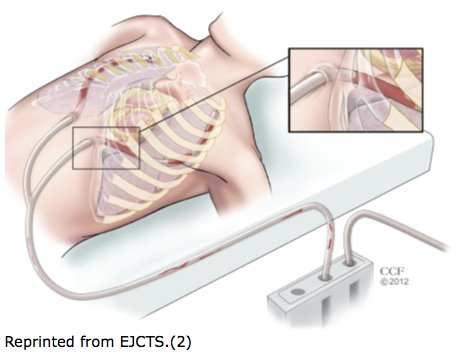
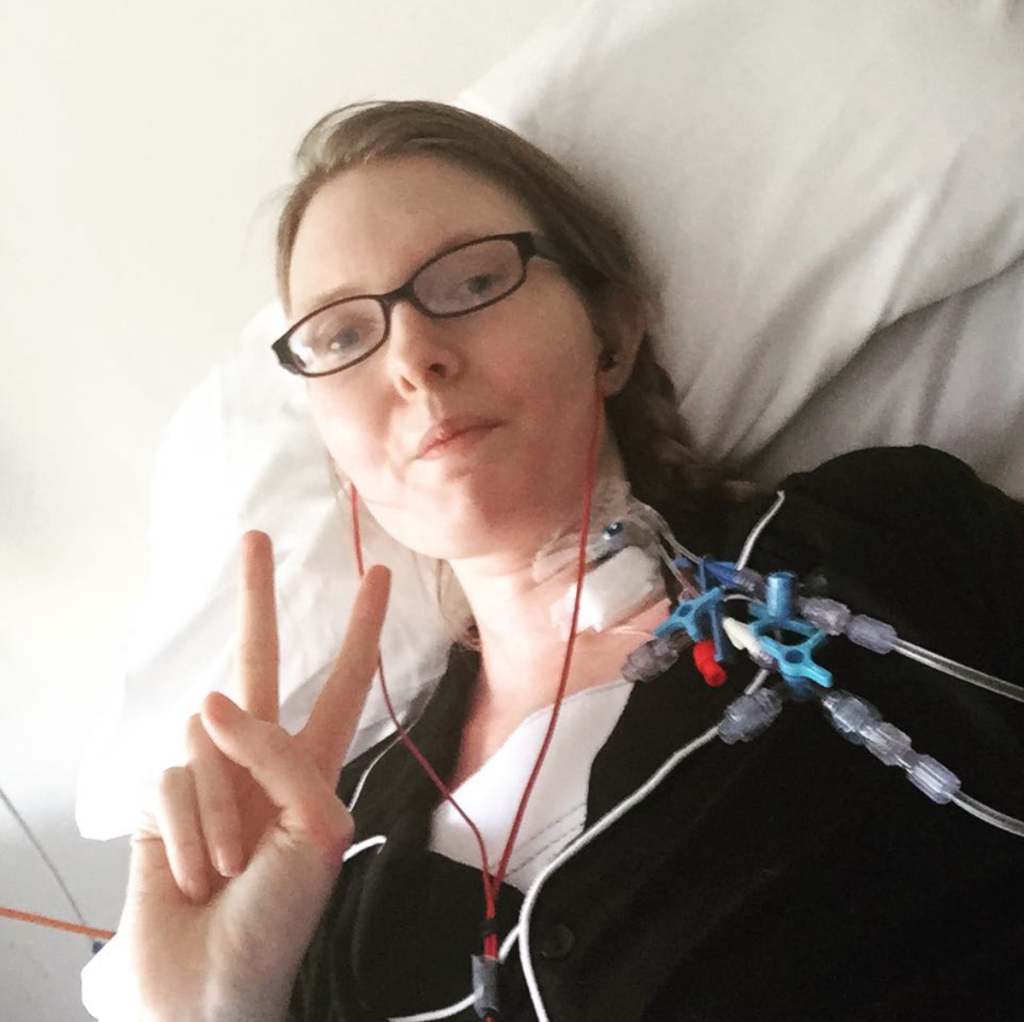
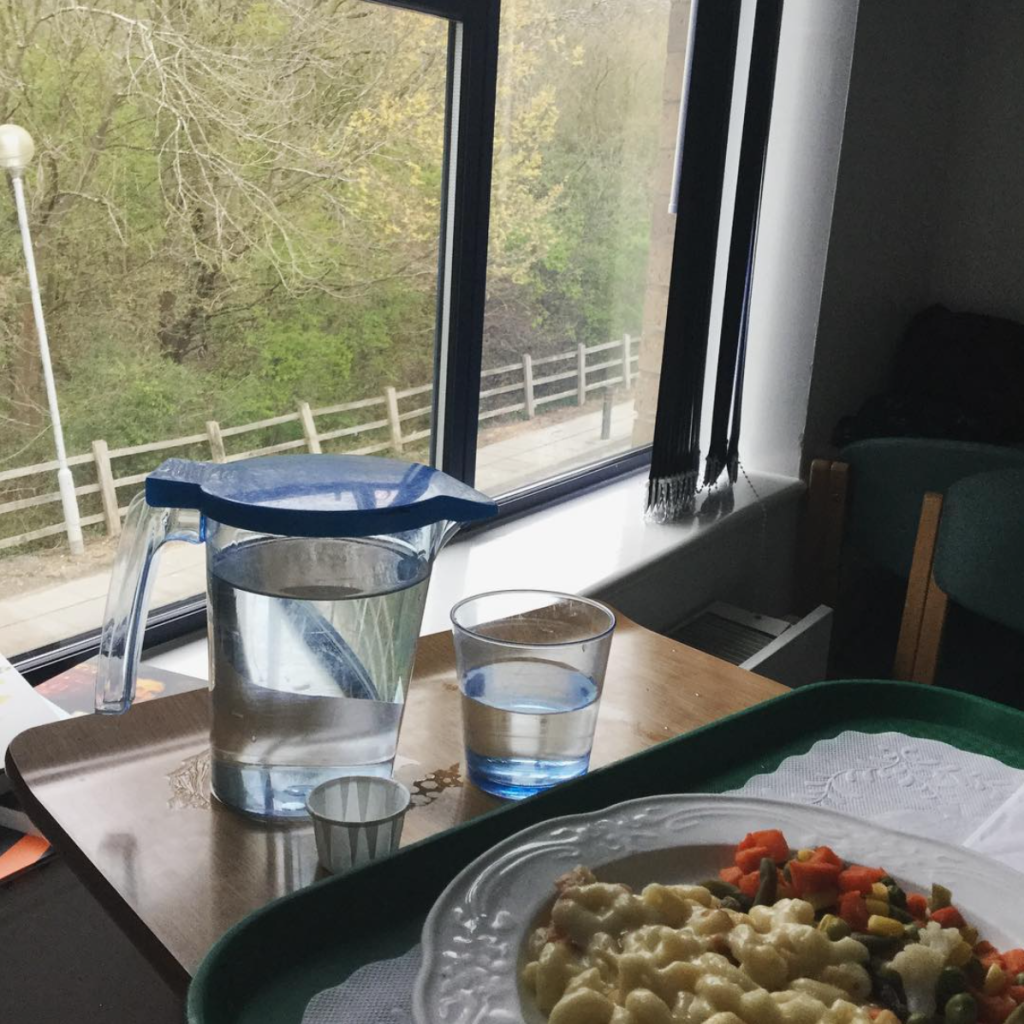

Fell across your website via Dr Who ‘Hand of Fear’ and Judith Paris.
Hope you are well and recovery is going well. 🙂
Pingback: What’s it like to have open heart surgery? Part IV | Somewhere Without Horizons